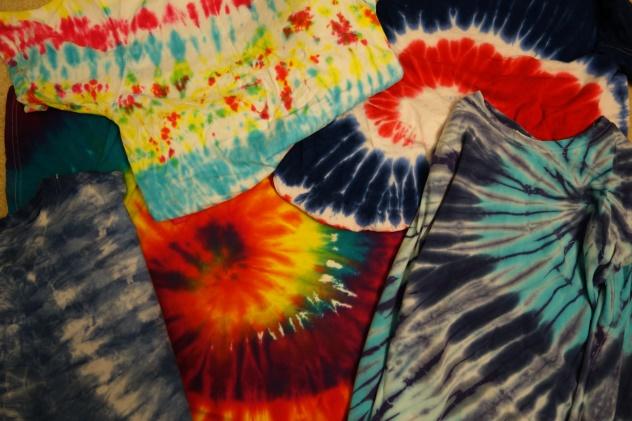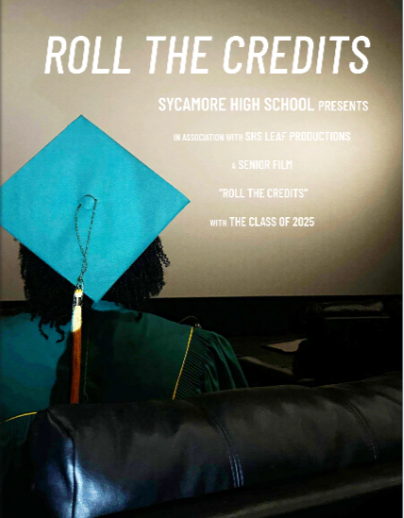Creating tie-dye
People associate tie-dyes with hippies and the peace-loving era of the 60’s. Today these colorful patterns are found in name brands as fashionable as Vogue or versatile as Land’s End. Every design is slightly different and can easily be done at home, as with the patterns shown in this picture.
February 2, 2015
Adding colors to fabrics to create different patterns goes back many centuries. Tie-dye’s bright colors help add personality to your wardrobe in an easy and simple way.
“The vivid colors from tie-dyes lift my mood,” freshman Abigail Teegarden said.
Rit tie-dye paints offers about nine regular colors and several seasonal colors in regular stores. However, tie-dyes can be an infinite number of colors as you mix them.
The Rit Studio site offers a library of how to make over 500 colors. If someone has a particular color in mind, they can describe the material and the color they want. Then a color specialist creates their customized formula.
“Tie-dye is really cool. You can wear it almost anywhere,” Teegarden said.
Engrained in the US culture, tie-dye appears everywhere including festivals, parades, and camps.
Tie-dye can be traced back to 500-800 A.D., when root and flower pigments decorated textiles in ancient Peru called ikats. The art can also be found in cultures like eighth century Japan’s Shibori with indigo dye and Bandhani in India used in sarees.
“With the last tie-dye I did, I used primary colors and did a design of spots. Next time, I want to try the double spiral. I think it will look like a Venn diagram,” freshman Lauren Ma said.
In the US, it is customary to do our own tie-dyes. Kits for tie-dying range from $6 to $20 and can be found in art stores. Furthermore, many books and online sites offer techniques and step-by-step instructions to make various patterns.
Take some time off to tie-dye, practice this ancient art, and personalize it to your own style.



![Mock Trial members from Gold and Green team last year pose for a picture in front of the OCLRE building in Columbus. "We all put in so much work [last] year. I know [this] year we’ll come back improved and ready to win!” said Ogunbodede.](https://shsleaf.org/wp-content/uploads/2025/10/IMG_4121-300x205.jpg)



